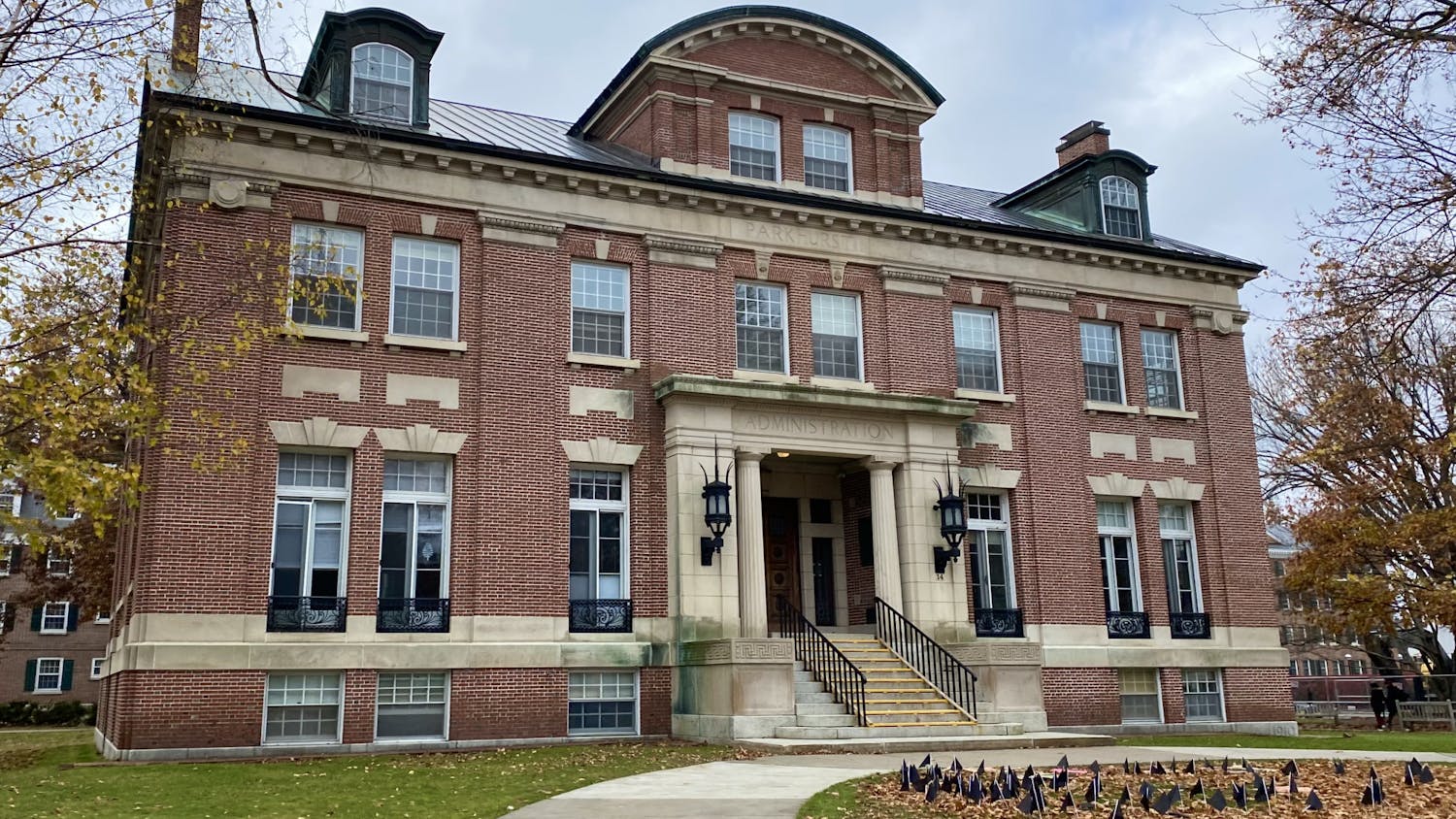Students in an introductory engineering course last fall developed products to solve everyday problems like roller-skating on rocky roads and transferring a person from a wheelchair to a regular seat.
Engineering Sciences 21, Introduction to Engineering, divides students into four or five person teams that must invent a product and develop a marketing strategy for it. This year, students were asked to work on problems related to transportation.
"The course is designed to teach creative problem solving and introduce students to the field of engineering while teaching them about real-world applications for their theories," Engineering Sciences Professor John Collier said.
Provided with $500 by the Thayer School of Engineering, each group was asked to identify a problem and create a product to solve that problem.
"We knew that a lot of people, especially college age students, love to rollerblade. And people always complain about falling and getting hurt going over bumps and cracks," said Carolyn Rice '95, one of the inventors of TRAILblades, a type of in-line roller skate that provides skaters with greater control on rough terrain and steep hills.
Compared with traditional in-line skates, TRAILblades have longer bases, 20 inches, and two wheels, rather than three, according to Rice.
"We're looking into a patent. The problem is that it's too much money so we're looking for a roller blade company to sponsor us," Rice said.
The modified wheelchair won the annual Philip R. Jackson Award for the best invention in Engineering Sciences 21. The wheelchair's prototype is designed with adjustable wheels and a transfer board to make getting out of the chair easier, said Margaret Porteus '96, one of the wheelchair's inventors.
Porteus said the group has not yet decided whether or not to try to market the wheelchair.
Other inventions designed by students include a cellular tracking device for stolen bicycles that can determine a bicycle's approximate location within a five to ten mile radius; Enable 1, a modified bicycle rack that is easy to mount on a car roof; and The Bike Buddy, a cross-bar that connects two bikes underneath the handlebars so two people can ride the bicycles side by side.
Collier said students also develop a business plan for marketing their product as a part of the course.
But Collier said that with the exception of osmonics, a procedure that separates salt water from fresh water and that resulted in a company by the same name, no inventions produced in the engineering class have ever been marketed by students.
However, several products similar to those developed in the class, including a hydraulic powered trash compactor and a pilot-less stove, have been marketed by others. Recently, L.A. Gear marketed an athletic shoe with a light in the heel that is similar to a design created in Engineering Sciences 21 two years ago.
Collier predicted that products similar to several of the prototypes developed in this year's class will be marketed within 24 months.



